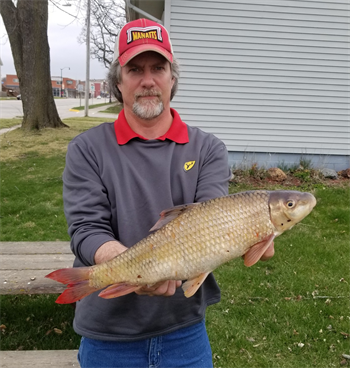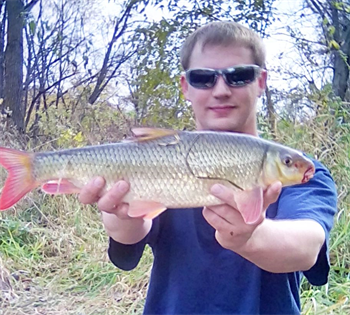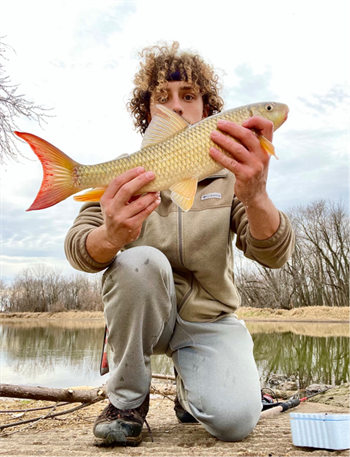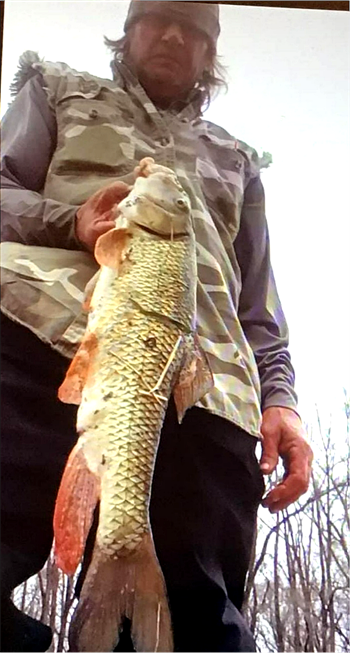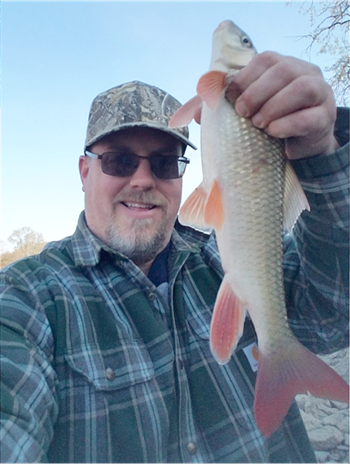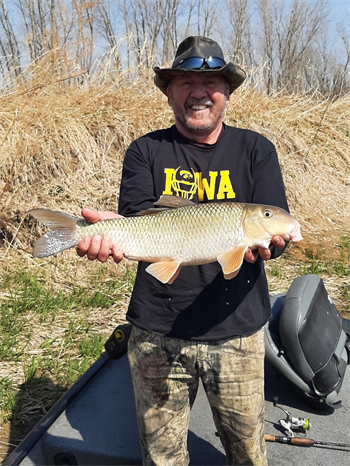Fish Iowa - Fish Species - Shorthead redhorse
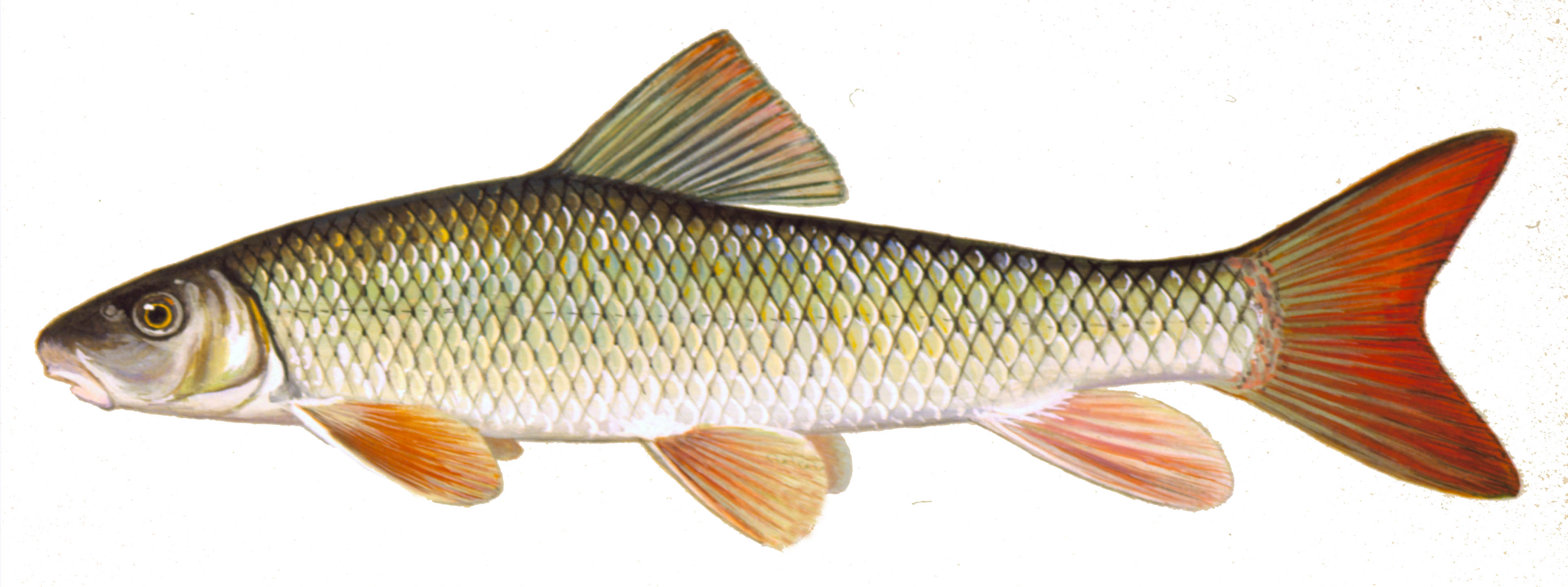
Characteristics
A slender, coarse-scaled sucker with a bright red tail fin. Its head is shorter than other redhorse, its dorsal fin is strongly curved inward, with 12-13 or sometimes 14 soft rays. The upper lip often has a "pea-shaped" swelling in the middle. The rear margin of the lower lip is nearly straight with the lip folds divided into prominent papillae. The pharyngeal teeth are thin, comb-like with about 53 per arch. The lateral line is complete with 41 to 45 scales. Scale count around the caudal peduncle is 12.
Foods
Aquatic insect larvae, some plant material, mainly algae
Expert Tip
- No results found
Details
Formerly named the Northern Redhorse (Moxostoma aureouim), this species was renamed to the present nomenclature in 1973.
The Shorthead Redhorse prefers moderate to swift current over sand and gravel substrate. This sucker is adaptable to high turbidity, but it lives mostly in clear to slightly turbid water in the deeper stretches of the channel.
Life history characteristics of Shorthead Redhorse are not much different than other redhorses. Adults commonly reach 10- to 22-inches long and weigh 1- to 4-pounds. Maturity is reached at age 3. Upstream spawning movements in large schools is common for male redhorses in early April at water temperatures of 47 to 60 degrees. Males gather and defend spawning territories that have gravel riffles and rubble shoals. The actual spawning ritual occurs when a female moves into the gravel-lined troughs or nests and two males mate with a single female. The semi-adhesive eggs are broadcast, left unattended and hatch in 4 or 5 days. An 18-inch female produces about 22,000 eggs. Growth of the Shorthead Redhorse averages 1.9-inches the first year of life, 16-inches at age 5 and 20.9-inches at 11 years of age in the Mississippi River.
Recent stream sampling information is available from Iowa DNR's biological monitoring and assessment program.
Distribution Map

Widely distributed throughout Iowa, but is more abundant in streams in the northern and eastern Iowa.
Abundant in the Mississippi River, common in the interior rivers and uncommon to rare in the natural lakes and the Missouri River drainage.
See our most recent distribution data for this species on the Iowa DNR's Bionet application.
Fish Surveys
Tip: Click Species Length by Site, then use the dropdown to filter by fish species of interest.Where this Fish Is Found
Bear Creek
Big Sioux River
Cedar River (Cedar Rapids to Moscow)
Cedar River (La Porte City to Cedar Rapids)
Cedar River (Moscow to Columbus Junction)
Coralville Reservoir
Des Moines River (Farmington to Keokuk)
Des Moines River (Stratford to Saylorville Lake)
East Fork Des Moines (Algona to Humboldt)
Gateway Park North
Iowa River (Columbus Junction to Mississippi R)
Iowa River (Coralville Lake to River Junction)
Iowa River (Iowa Falls to Marshalltown)
Iowa River (Marshalltown to Coralville Lake)
Iowa River (River Junction to Columbus Junction)
Little Sioux River (Correctionville to Missouri R)
Little Sioux River (Linn Grove to Correctionville)
Little Sioux River (state line to Linn Grove)
Middle River
Missouri River (Council Bluffs to state line)
Missouri River (Little Sioux to Council Bluffs)
Missouri River (Sioux City to Little Sioux)
Mohawk Park Lake
North Raccoon River (Perry to Van Meter)
North River
Pool 16, Mississippi River
Pool 17, Mississippi River
Pool 18, Mississippi River
Pool 19, Mississippi River
Prairie Park Fishery
Saylorville Reservoir
Skunk River (Coppock to Mississippi River)
Skunk River (Rose Hill to Coppock)
South Skunk River (Cambridge to Pella)
Trout Run
Wapsipinicon River (Oxford Junct to Mississippi R)
Wapsipinicon River (Troy Mills to Oxford Junction)
West Nishnabotna River
Winnebago River
